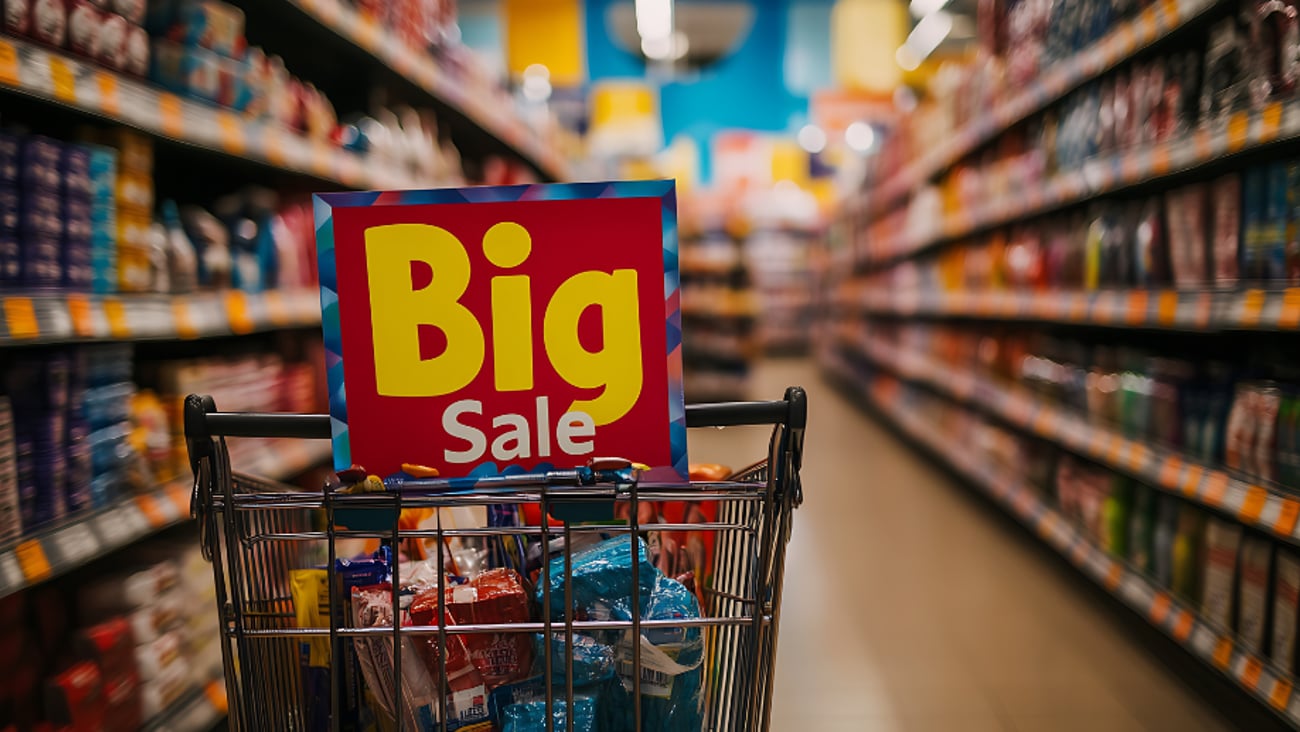How to Meet Unconstrained Demand in a Constrained World - Part 1
Businesses in the consumer packaged goods (CPG) and retail sectors are confronted with a complex challenge: meeting unconstrained demand in a world where constraints are the norm. Constraints in supply chains, raw material availability, manufacturing capacity and even logistics are exacerbated by global economic fluctuations, geopolitical tensions and unpredictable consumer behavior. In this environment, demand planning is a critical tool to align supply with demand, optimize resource allocation and enhance customer satisfaction.
In this two-part series, we will define unconstrained demand and present the challenges it creates for CPG companies and retailers, then review how demand planning is being deployed to address those challenges paying close attention to the use of technology. Part two will focus on the business use cases and potential benefits of using AI and other tools to optimize the management of unconstrained demand.
Unconstrained demand refers to the idealized level of demand that a product experiences in the absence of any limitations on supply or production. This concept represents the maximum potential sales that can be achieved if there were no bottlenecks or restrictions in the supply chain. For companies, understanding unconstrained demand is crucial for several reasons:
- Accurate Sales Projections: Estimating unconstrained demand allows businesses to understand the true market potential for their products, aiding in long-term strategic planning and investment decisions.
- Optimal Inventory Management: By knowing the unconstrained demand, companies can better manage their inventory levels, reducing the risk of stockouts or overstocking, which can lead to lost sales or increased holding costs.
- Enhanced Customer Satisfaction: Meeting unconstrained demand ensures that customers can purchase products when and where they want them, leading to higher customer satisfaction and loyalty.
Despite the allure of unconstrained demand, real-world constraints inevitably arise. These limitations can be broadly categorized into supply-side and demand-side factors. On the supply-side, constraints include production capacity issues that limit manufacturing capabilities and restrict the ability to meet high levels of demand, especially during peak periods and logistical challenges like transportation bottlenecks, labor shortages and rising fuel costs that impact the ability to deliver products to consumers on time. Supply chain disruptions such as natural disasters, political unrest or pandemics can also disrupt the flow of raw materials and finished goods, leading to supply shortages.
Demand-side constraints include economic downturns during which consumers often reduce spending, leading to lower demand for non-essential goods and price sensitivity issues where consumers may be unwilling to pay higher prices, especially if they perceive alternatives to be available. Changes in consumer behavior, such as a shift towards sustainable products, can also impact demand for certain goods.
The Role of Demand planning
In this constrained world, demand planning becomes indispensable. Effective demand planning allows businesses to predict future demand accurately and align their supply chain strategies accordingly.
So, how is demand planning helping CPG companies and others meet unconstrained demand in a constrained world? Like most other operations, it starts and stops with data and analytics. Demand planning relies on historical sales data, market trends, and advanced analytics to predict future demand. By leveraging machine learning (ML) algorithms and AI tools, companies can analyze vast datasets to identify patterns and predict demand more accurately. For example, a CPG company might use demand planning models to anticipate seasonal spikes in demand for certain products, allowing them to ramp up production in advance and ensure adequate stock levels, as well as help them take advantage of other market opportunities of unconstrained demand.
Next is scenario planning. Demand planning enables businesses to conduct scenario planning, allowing them to prepare for various possible futures. By considering different scenarios, such as a sudden increase in demand due to a competitor’s exit from the market, companies can develop contingency plans to respond quickly to changes. In the retail sector, scenario planning can help businesses manage the impact of external factors, such as economic downturns or shifts in consumer preferences, by adjusting pricing strategies or promotional efforts.
For both inventory optimization and supply chain coordination, the focus is on precision and speed. By accurately predicting demand, businesses can maintain optimal inventory levels, minimizing the costs associated with excess inventory while reducing the risk of stockouts. For instance, a retailer might use demand planning to determine the optimal quantity of perishable goods to order, reducing waste and improving profitability. Demand planning also fosters better coordination across the supply chain. By sharing demand forecasts with suppliers and logistics partners, companies can ensure that all parts of the supply chain are aligned and prepared to meet expected demand. This coordination is particularly important in the CPG industry, where just-in-time manufacturing and delivery models require precise timing to avoid production delays and missed delivery windows.
Finally, there are customer-centric strategies. In a consumer-driven market, understanding customer demand is paramount. Demand planning allows businesses to adopt customer-centric strategies, such as personalized marketing and dynamic pricing, to better meet the needs of their target audience. Retailers use demand planning to tailor their product offerings and promotions to different customer segments, enhancing the shopping experience and driving sales.
Overcoming Constraints with Technology
Advancements in technology play a critical role in overcoming constraints and meeting unconstrained demand. Artificial intelligence (AI) and machine learning (ML) are transforming demand planning by providing more accurate and granular predictions. These technologies enable real-time data analysis, allowing businesses to respond swiftly to changes in demand or supply chain disruptions.
Moreover, the integration of demand planning with supply chain management systems and enterprise resource planning platforms enhances visibility across the entire value chain. This integration allows businesses to make informed decisions and quickly adapt to evolving market conditions.
The ability to accurately forecast and meet unconstrained demand is a significant competitive advantage for businesses in the CPG and retail sectors. By leveraging advanced demand planning techniques, companies can optimize inventory, enhance supply chain coordination and implement customer-centric strategies that drive growth and profitability. As technology continues to evolve, particularly AI and ML, the potential for even more accurate and responsive demand planning will only increase, enabling businesses to navigate the challenges of a constrained world and unlock new opportunities for success.
The experts from Demand Chain AI, all of whom have practical experience, help CPG companies and retailers address their demand planning challenges and opportunities every day.
More information is available HERE.





